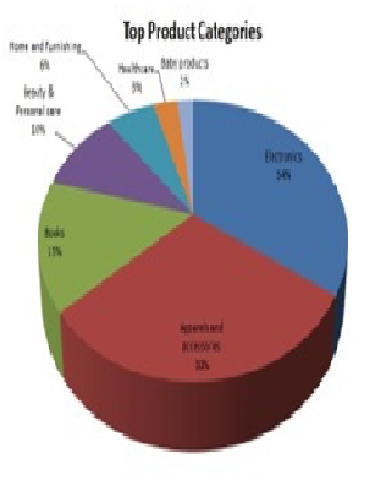
If the Internet is anything to go by, India’s technological and economic growth has moved into the top gear. With more India’s online shopping registering a phenomenal 100 per cent annual growth, many retail chains and consumer durable companies are joining the Web bandwagon to tap the e- shopping market.
When the concept of ‘Online Shopping’ was at a rudimentary stage and e-commerce firms were just developing, the inability to deliver fast was one of the major obstacles to attaining success in the industry. The scenario has undergone massive metamorphosis since then, owing to the rising competition and increasing awareness among customers.
According to Google, India has more than 100 million Internet users, out of which around half opt for online purchases and the number is growing every year. With such a large market size, companies, right from retail shops to consumer goods, are entering the Web space to attract potential customers. Even traditional retailers like Shoppers Stop, Westside and Pantaloons are looking at the online shopping space for growth.
According to the Associated Chambers of Commerce and Industry of India (Assocham), the size of the online retail industry is expected to touch Rs 7,000 crore by 2015, up from Rs 2,000 crore now, at an annual growth rate of 35 per cent.
According to industry leaders, portals offering daily deals and discount offers with good delivery services attract the largest number of online shoppers. Discount cards offer 15-90 per cent discounts on deals from about 2,000 dining, movie and retail chains in various cities – for movie tickets, dining and hospital bills or for shopping for local brands. People are not only using the Web to book air tickets and movie tickets but also do not hesitate in placing orders for mobiles, laptops and other consumer electronics and home appliances. Keeping in mind this growing potential, not just large brands but even general retail chains are upgrading their sites for ecommerce, making it more convenient for customers to place online purchase orders.
According to eBay, Indian online shoppers remain brand savvy, even when they are shopping online. The eBay India Census has found that brands such as Sony, Nokia, Samsung, Apple and Reebok continue to top buyers’ charts. Category-wise lifestyle products, such as cosmetics, jewellery, watches, fashion products and fitness equipment contribute over 45 per cent to eBay’s sales in India.
India first came into interaction with the online E-Commerce via the IRCTC. The government of India experimented this online strategy to make it convenient for its public to book the train tickets. Hence, the government came forward with the IRCTC Online Passenger Reservation System, which for the first time encountered the online ticket booking from anywhere at any time.
After the unpredicted success of the IRCTC, the online ticket booking system was followed by the airlines (like AirDeccan, Indian Airlines, Spicejet, etc.). Airline agency encouraged, web booking to save the commission given to agents and thus in a way made a major population of the country to try E-Commerce for the first time.
The acceptance of the ecommerce on a large scale by the Indian people influenced other business players also to try this technique for their E-businesses and gain high profits. Though online shopping has been present since the 2000 but it gained popularity only with deep discount model of Flipkart. In a way it re-launched online shopping in India. Soon other portals like Amazon, Flipkart, Jabong, etc. started hunting India for their businesses.
The Key drivers of in Indian ecommerce have been:
• Increasing broadband Internet and G penetration.
• Growing Living standards
• Availability of much wider product range
• Busy lifestyles and lack of time for offline shopping
• Increased usage of online categorized sites
India’s eCommerce market, which was at 2.5 billion in 2009, reached $8.5 billion in 2012 and now it is estimated to reach $20 billion by the end of 2015. The survey also estimates that the country’s eCommerce market to reach $56 billion by 2023, driven by rising online retail.







